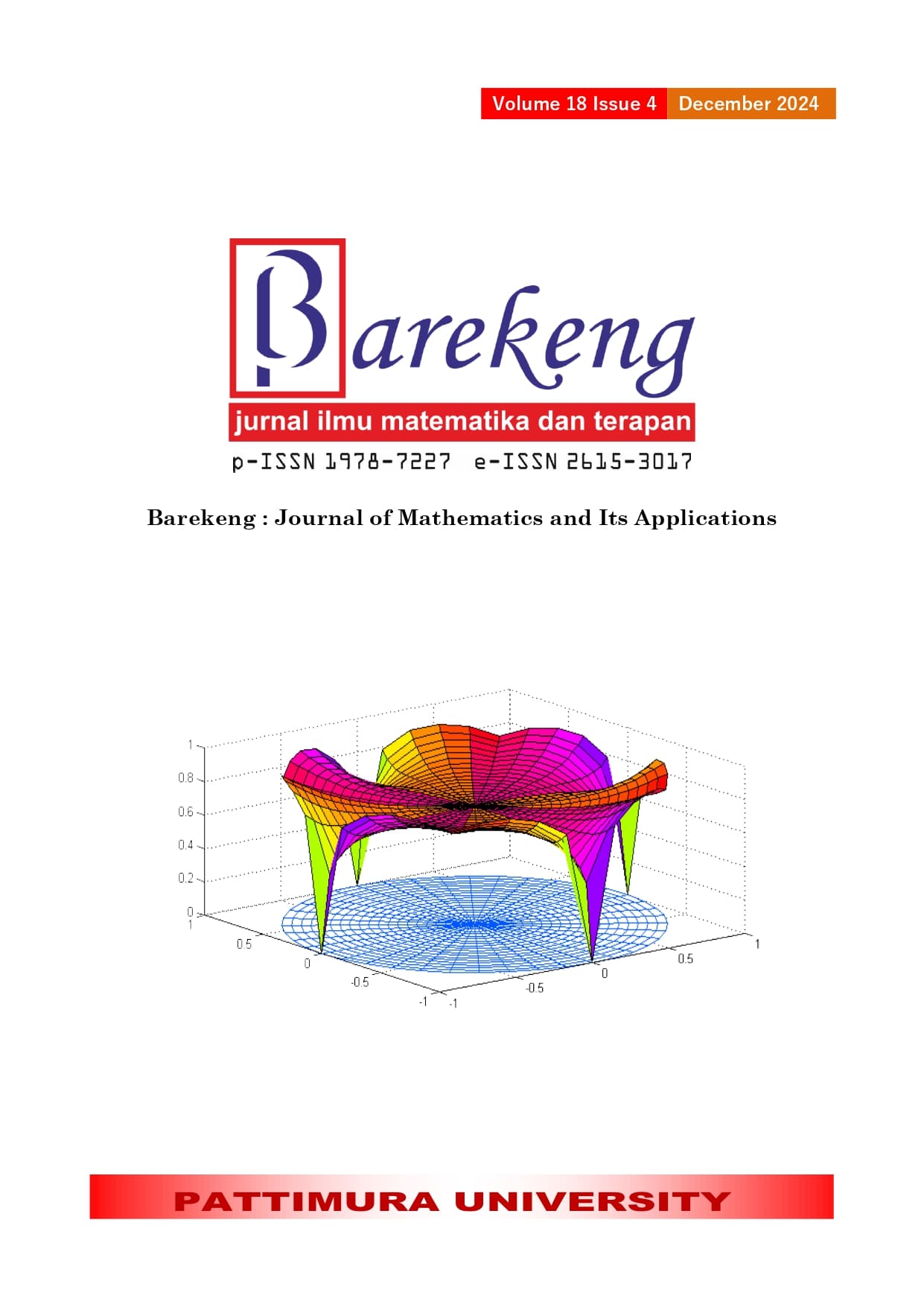MODELING EMPLOYEE RESIGNATION USING A SEMIPARAMETRIC APPROACH COX PROPORTIONAL HAZARD
Abstract
Survival analysis is a research method that studies the duration individuals or experimental units endure against events like death, disease, recovery, or other experiences. This study employs a semi-parametric survival analysis model using the Cox proportional hazards regression method to identify factors such as age, gender, marital status, and education influencing how long employees stay with a company before resigning. The aim is to describe and interpret significant factors affecting employee resignation using the Cox Regression method. The results indicate that age significantly influences employee tenure. The average tenure is eight years. The probability of an employee still working at age 32 for up to eight years is 0.0057, while the likelihood for an employee who has worked more than eight years at age 32 is 0.9943. The study uses secondary data on the tenure of 521 employees, analyzed with the Cox proportional hazards regression method. The data, however, has limitations due to type III censoring, where some subjects leave observation, resulting in incomplete data. The study concludes that age significantly impacts employee tenure. Younger employees tend to explore career opportunities, while older employees seek stability, pension benefits, and a comfortable work environment.
Downloads
References
G. Syahronica, "The influence of job satisfaction and work stress on turnover intention (Study on employees of the fantasy world department of PT Pembangunan Jaya Ancol, Tbk)," Journal of Business Administration, vol. 20, no. 1, 2015.
N. Gunaprasida and A. Wibowo, "The effect of work-family conflict and flexible work arrangements on turnover intention: do female and male employees differ?," Journal of Business Strategy, vol. 23, no. 1, pp. 27–36, 2019.
A. Setiawan and R. Pratiwi, "The impact of high employee turnover on organizational productivity and employer branding: A study in the retail industry," Journal of Management Studies, vol. 35, no. 2, pp. 67-82, 2022.
B. Susanto and R. Utami, "The role of employee retention strategies in enhancing organizational productivity: A case study in the technology industry," Journal of Human Resource Management, vol. 30, no. 3, pp. 78-92, 2021.
M. Ahyar and Y. Maulana, "Factors that Influence PT Turnover Intention. Zhi Sheng Indonesia Sumedang Area," Journal of Business Disruption, vol. 5, no. 2, pp. 100-114, 2022.
B. Suryadi and A. Wibisono, "The application of survival analysis in predicting customer churn is a case study in the telecommunications industry," Journal of Data Science and Analytics, vol. 15, no. 3, pp. 45-58, 2021.
E. T. Lee, "Statistical Methods for Survival Data Analysis," John Wiley & Sons, 2003.
A. Brahmantyo et al., "Survival Analysis with the Cox Regression Method," Ph.D. dissertation, Department of Statistics, Faculty of Mathematics and Natural Sciences, University of Indonesia, 2015.
R. Sari and E. Susanto, "Understanding loan default prediction using survival analysis: A case study in the banking industry," Journal of Financial Analytics, vol. 15, no. 3, pp. 67-80, 2021.
J. F. Lawless, "Statistical Models and Methods for Lifetime Data," John Wiley & Sons, 1982.
D. Collett, "Modelling survival data in medical research," CRC Press, 2023.
D. Maruddani et al., "Censored Data Analysis in Health Research," Journal of Public Health, vol. 9, no. 2, pp. 123-135, 2021.
H. Latan, "Application of Statistical Data Analysis for Social Sciences and Science with IBM SPSS," Alphabeta, 2014.
D. Collett, "Modelling Survival Data in Medical Research," Chapman & Hall, 2003.
D. Prasetyo and E. Santoso, "Analyzing the impact of training programs on workforce resilience: A survival analysis perspective in the service industry," Journal of Training and Development, vol. 30, no. 2, pp. 67-8, 2022.
Wahyunur and E. Santoso,2022. [Online]. "Analysing the impact of workplace environment and leadership style on employee loyalty at the Bone Arasoe Sugar Factory," Skripsi. Available: http://repository.unhas.ac.id/id/eprint/22940/2/A021181028_skripsi_27-10-2022%201-2.pdf. [Accessed 30 Maret 2024 ].
Copyright (c) 2024 Ni Wayan Widya Septia Sari, Ardi Kurniawan, Elly Ana

This work is licensed under a Creative Commons Attribution-ShareAlike 4.0 International License.
Authors who publish with this Journal agree to the following terms:
- Author retain copyright and grant the journal right of first publication with the work simultaneously licensed under a creative commons attribution license that allow others to share the work within an acknowledgement of the work’s authorship and initial publication of this journal.
- Authors are able to enter into separate, additional contractual arrangement for the non-exclusive distribution of the journal’s published version of the work (e.g. acknowledgement of its initial publication in this journal).
- Authors are permitted and encouraged to post their work online (e.g. in institutional repositories or on their websites) prior to and during the submission process, as it can lead to productive exchanges, as well as earlier and greater citation of published works.






1.gif)



